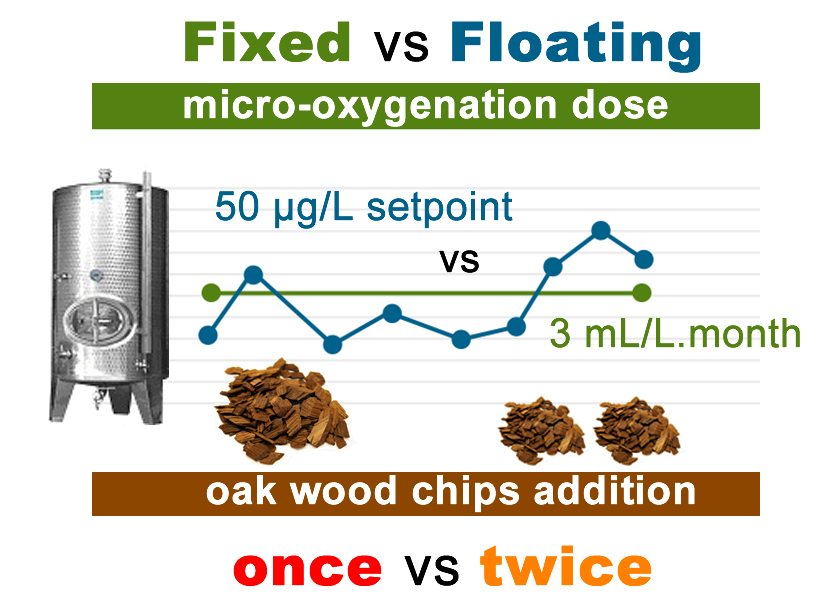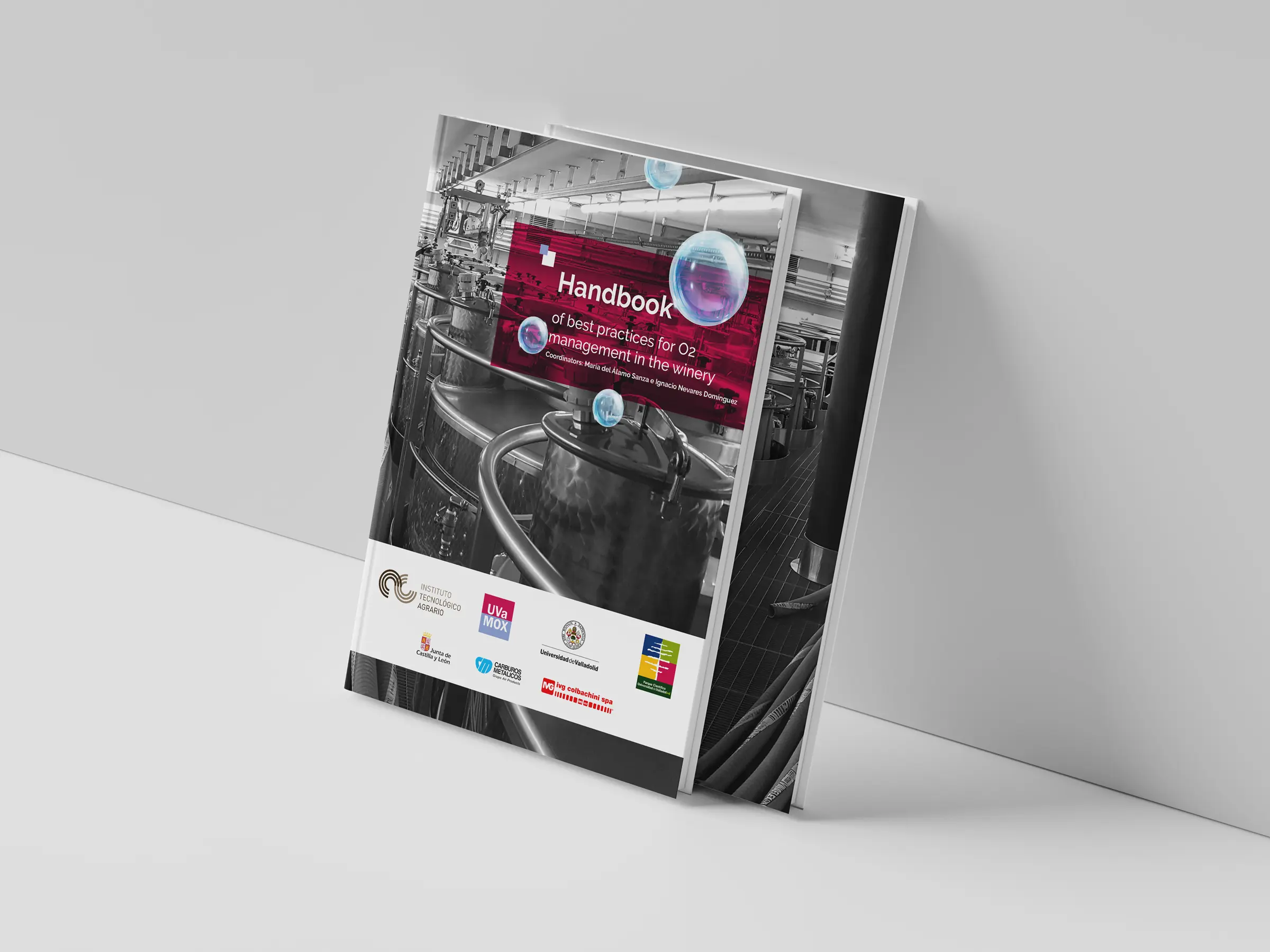Rosario Sánchez-Gómez, Ignacio Nevares, Ana María Martínez-Gil and Maria del Alamo-Sanza*
Full-Text | PDF [3979 KB, uploaded 6 September 2018] |
Abstract
The use of alternative oak products (AOP) for wine aging is a common practice in which micro-oxygenation (MOX) is a key factor to obtain a final wine that is more stable over time and with similar characteristics as barrel-aged wines. Therefore, the oxygen dosage added must be that which the wine is able to consume to develop correctly. Oxygen consumption by red wine determines its properties, so it is essential that micro-oxygenation be managed properly. This paper shows the results from the study of the influence on red wine of two different MOX strategies: floating oxygen dosage (with dissolved oxygen setpoint of 50 µg/L) and fixed oxygen dosage (3 mL/L·month). The results indicated that the wines consumed all the oxygen provided: those from fixed MOX received between 3 and 3.5 times more oxygen than the floating MOX strategy, the oxygen contribution from the air entrapped in the wood being more significant in the latter. Wines aged with wood and MOX showed the same color and phenolic evolution as those aged in barrels, demonstrating the importance of MOX management. Despite the differences in the oxygen consumed, it was not possible to differentiate wines from the different MOX strategies at the end of the aging period in contact with wood. View Full-Text




